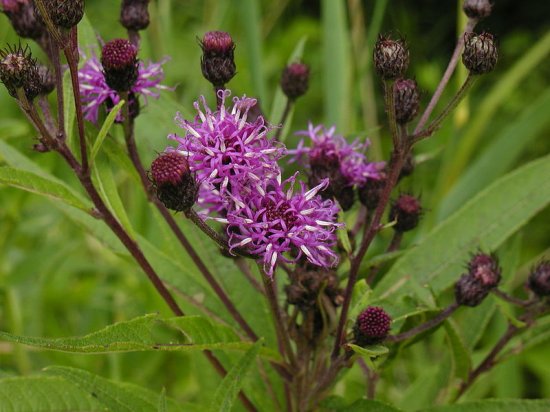New York Ironweed (Vernonia noveboracensis) Gardening
[an error occurred while processing this directive]
New York Ironweed (Vernonia noveboracensis) is a flowering plant in the family Asteraceae, native to the eastern United States. It is also known as Vein-leaf hawkweed or Ironweed. The genus name, Vernonia, is named after an English botanist, William Vernon, who collected plants in Maryland in the 17th century. The common name 'ironweed' is given in reference to the stout stems that often persist throughout the winter.
New York ironweed is a perennial herbaceous plant, growing in damp meadows, hayfield, ditches, marshes and pastures, giving a deep purple haze. It is a tall, coarse, upright perennial which typically occurs in the wild in moist thickets, low areas and along stream banks. The stiff stems are 0.6-2 m tall, and several stems can arise from a single crown. The lance-shaped leaves are rough, pointed with serrated margins, 15-20 cm long, smooth on the upper surface and may have many soft white hairs underneath. The leaves grow along the stiff stems. In late summer and autumn, tiny, fluffy, deep purple flowers, 8-12 mm in diameter, are borne in loose terminal clusters of 7.5-10 cm wide. The fruit is a nutlet.
New York Ironweed tea was used by the Cherokee to help with menstrual pain and to relieve afterbirth pains.
New York ironweed grows well in full sun to light shade, in moist or boggy ditch, poorly drained or well-drained soil.

New York Ironweed (Vernonia noveboracensis)
Author: SB_Johnny (Creative Commons Attribution 3.0 Unported)
|

